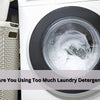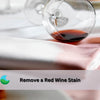Recyclable vs. Non-Recyclable Plastics: What Every Australian Should Know
- by Brodie Cook

Plastic recycling is important because it helps reduce waste and protect the environment. When we recycle plastic, we use less raw materials, save energy, and decrease pollution. Australia is working hard to improve its plastic recycling system, but there is still a lot of confusion about which plastics can be recycled and which ones can't.
In Australia, some plastics are easy to recycle and are accepted in most kerbside recycling bins.
The Plastic Identification Codes
To help people know which plastics can be recycled, there is a system called the Plastic Identification Codes. These codes are the numbers you see inside the triangle on plastic products. The numbers go from 1 to 7, and each number stands for a different type of plastic. For example, number 1 is for PET (Polyethylene Terephthalate), which is used to make soft drink bottles and can be recycled in most places. I will reveal the codes in the next part.
Plastics That Can Be Recycled in Australia

In Australia, there are several types of plastic that can be recycled through your kerbside collection. These include:
1. PET (Polyethylene Terephthalate)
This clear, tough plastic is often used for soft drinks and water bottles. It can be recycled into new bottles, containers, and even clothing.
2. HDPE (High-Density Polyethylene)
This is a very common, hard plastic that comes in white or colored varieties. It's used for milk bottles, shampoo bottles, and cleaning products. Recycled HDPE can be made into new bottles, pipes, and even playground equipment.
3. PVC (Polyvinyl Chloride)
This hard, clear plastic is used for cordial and juice bottles. PVC can be recycled into new pipes, fittings, and flooring.
4. LDPE (Low-Density Polyethylene)
This soft, flexible plastic is used for squeeze bottles and some plastic bags. While not all kerbside collections accept LDPE, it can be recycled into new packaging materials and plastic lumber.
5. PP (Polypropylene)
This is a hard but flexible plastic used for ice cream containers, takeaway food containers, and some bottle caps. Recycled PP can be turned into new containers, auto parts, and industrial fibres.
6. PS (Polystyrene)
This clear, brittle plastic is used for yoghurt containers and sometimes takeaway food packaging. PS can be recycled into new packaging, insulation, and office supplies.
7. Other
This category includes plastics like nylon, acrylic, and polycarbonate, which are less common and harder to recycle. Some 'Other' plastics can be recycled through special programs, but not usually through kerbside collection.
To recycle these plastics, rinse them clean, remove any caps or lids, and place them in your recycling bin. By recycling, you help reduce waste and conserve resources.
Plastics That Cannot Be Easily Recycled

While many plastics can be recycled, some types are harder to recycle and are not accepted in most kerbside recycling bins. These include:
- Soft plastics: This includes things like plastic bags, bread bags, bubble wrap, and plastic wrappers. These are also single-use plastics. These items can't be recycled in your regular bin because they can get tangled in the recycling machines and cause problems. Instead, you can recycle soft plastics at special collection points, like those found at some supermarkets.
- EPS (Expanded Polystyrene): This is a type of foam plastic used for packaging, meat trays, and some cups. EPS is very light and can break into small pieces, making it hard to recycle. Most kerbside collections do not accept EPS, but some special recycling programs may exist.
There are a few reasons why these plastics are hard to recycle:
- They can be difficult and expensive to collect and sort.
- They can be contaminated with food or other materials, making them unsuitable for recycling.
- There may not be enough demand for products made from these recycled plastics.
Despite these challenges, it's important to keep these plastics out of landfills and the environment. Look for special recycling programs or try to reduce your use of these materials when possible.
The Recycling Process and Second Life of Plastics

When you put your plastic items in the recycling bin, they go on a journey to be transformed into new products. Here's a simple explanation of how it works:
- Collection: Your recycling is picked up and taken to a sorting facility.
- Sorting: The plastics are separated by type using machines and manual sorting.
- Cleaning: The sorted plastics are cleaned to remove any dirt, food, or labels.
- Shredding: The clean plastics are chopped into small pieces called "flakes."
- Melting: The flakes are melted down and formed into small pellets.
- Manufacturing: The pellets are used to make new products.
The recycled plastics can be turned into many different things, depending on their type. For example:
- PET (soft drink bottles) can be recycled into clothing, carpets, and even new bottles.
- HDPE (milk bottles) can become new bottles, pipes, or outdoor furniture.
- PVC (clear cordial bottles) can be used to make new pipes, window frames, and flooring.
- LDPE (squeeze bottles) can be transformed into plastic lumber or new packaging.
- PP (ice cream containers) can have a second life as storage boxes, car parts, or brooms.
By recycling your plastics, you help save resources and energy, and you give these materials a second life as new and useful products.
Barriers to Effective Plastic Recycling
While recycling plastics is important, there are some challenges that can make it difficult. Here are a few of the main barriers:
- Contamination: This was mentioned before. But let me explain it a bit more. When plastics are not cleaned properly or are mixed with other materials like food or dirt, they can't be recycled. This is because contamination can ruin the quality of the recycled plastic and make it unusable. Always remember to rinse your plastics and remove any caps or labels before recycling.
- Economic and technical challenges: Recycling plastics can be expensive and complicated. It requires special machines and processes, and sometimes the cost of recycling is higher than the value of the recycled material. This can make it hard for recycling companies to stay in business.
- Lack of infrastructure: In some areas, there may not be enough recycling facilities or programs to handle all the different types of plastics. This means that some plastics may end up in landfills or pollute our ocean even if they could be recycled.
Despite these challenges, many people and organisations are working hard to improve plastic recycling. By doing our part and recycling correctly, we can help make the process more efficient and effective.
Recommended read: Ocean Plastic Pollution
Go Plastic-Free, One Clean at a Time
Make your home cleaner and greener with Lucent Globe’s Everything Bundle. No plastic bottles. No harsh chemicals. Just powerful cleaning made simple.
Shop Plastic-Free BundlesImproving Plastic Recycling in Australia
There are many ways we can work together to make plastic recycling better in Australia. Here are some ideas:
One strategy is to educate people about the importance of recycling and how to do it properly. This means teaching everyone to check the recycling codes, rinse their plastics, and separate them correctly. Schools, community groups, and local councils can all play a part in spreading this message.
Another approach is to find new and innovative ways to recycle plastics that are currently hard to process. Scientists and engineers are working on developing better technologies and methods to recycle things like soft plastics and polystyrene. Some companies are even finding ways to turn these tricky plastics into new products like building materials or furniture.
Finally, we all have a role to play in promoting recycling. As consumers, we can choose to buy products made from recycled plastics and support businesses that use recycled materials. Businesses can design their products and packaging to be more recyclable and invest in recycling programs. And governments can create policies and infrastructure that make recycling easier and more accessible for everyone.
Ready to make a positive change? Start with your cleaning routine! At Lucent Globe, we're passionate about our community and the environment. Make the switch today! Our product packaging is plastic-free and our products are environmentally kinder because we don't use phospates!
Conclusion
In this article, we've learned about the different types of plastics and which ones can be recycled in Australia. We now know that plastics like PET, HDPE, PVC, LDPE, PP, and PS can usually go in our kerbside recycling bins, while others like soft plastics and polystyrene need special handling. We also discovered how recycled plastics are turned into new products and what challenges can make recycling difficult.
As consumers, it's important for us to understand how plastic recycling works so we can make good choices. By recycling correctly and supporting products made from recycled materials, we can all play a part in reducing plastic waste and keeping our environment clean. So let's take action today – check those recycling codes, rinse our plastics, and spread the word about the power of recycling!
FAQ About Recyclable Plastics
What is plastic recycling?
Plastic recycling is the process of recovering waste or scrap plastic and reprocessing it into useful products. This helps to reduce the amount of plastic waste ending up in landfills or the ocean.
What types of plastics can be recycled in Australia?
In Australia, commonly recycled plastics include PETE, HDPE, PP, and PS. These plastics are accepted at most recycling centres for curbside recycling.
What plastics cannot be recycled?
Plastics like PVC and some types of PS are not easily recyclable and are often not accepted in curbside recycling programs.
How is plastic recycling beneficial for the environment?
Plastic recycling helps reduce the amount of plastic waste in landfills, the environment and our ocean. It conserves natural resources, reduces greenhouse gas emissions, and saves energy compared to producing new plastic from raw materials.
What are some common products made from recycled plastics?
Recycled plastics can be used to create a wide range of products including plastic bottles, containers, packaging materials, textiles, speed bumps, and even 3D printing materials.
Can plastics be recycled multiple times?
Plastics like PETE and HDPE can be recycled multiple times as long as they are properly sorted and processed. However, the quality of the recycled material may degrade slightly with each recycling cycle.

 Dishwashing
Dishwashing Laundry
Laundry Bundles
Bundles Surfaces
Surfaces Toilet
Toilet Handsoap
Handsoap Multi-Purpose
Multi-Purpose Floor
Floor




